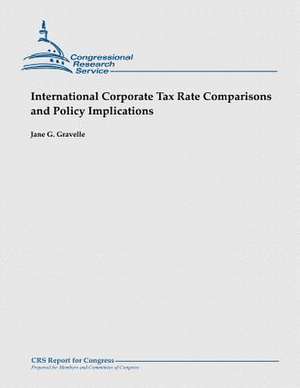International Corporate Tax Rate Comparisons and Policy Implications
Autor Jane G. Gravelleen Limba Engleză Paperback
Preț: 93.84 lei
Nou
Puncte Express: 141
Preț estimativ în valută:
17.96€ • 18.75$ • 14.86£
17.96€ • 18.75$ • 14.86£
Carte disponibilă
Livrare economică 14-28 martie
Preluare comenzi: 021 569.72.76
Specificații
ISBN-13: 9781481914536
ISBN-10: 1481914537
Pagini: 36
Dimensiuni: 216 x 280 x 2 mm
Greutate: 0.11 kg
Editura: CREATESPACE
ISBN-10: 1481914537
Pagini: 36
Dimensiuni: 216 x 280 x 2 mm
Greutate: 0.11 kg
Editura: CREATESPACE
